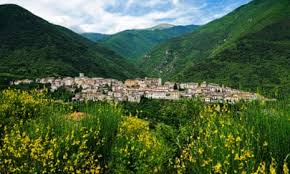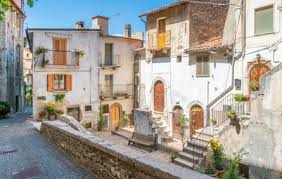‘We made everything bear-proof’: The village in Italy that learned to love its bears

Rome: Pettorano sul Gizio is a medieval mountain town full of alleys, watchful cats and wooden doors locked sometime in the last century. In the lower parts of town, rustic charm turns into abandonment – branches grow out of walls and roofs have fallen in. The only bar closed at Christmas, after the owner died. Some “For Sale” signs have been up so long the phone number is illegible.
The town, with its faded ochre and orange hues, is listed as one of Italy’s I Borghi più belli (an association of historic towns). In 1920, about 5,000 people lived here, now the population is 390. It resembles many others in Italy’s south-central Abruzzo region, home to a shrinking, ageing population. One nearby town has been almost completely abandoned, and is home to just 12 people.
But Pettorano sul Gizio is different – set apart by its passion for bears. A lifesize model of a brown bear and cub stands in the town square, and paintings of bears look down from the walls.
At dawn and dusk, a bear known as Barbara is known to wander the narrow streets – sometimes trailed by cubs – to see if she can pilfer any food.
Now known as “the town that went wild”, it has attracted a new crowd of younger people working in nature restoration. Yet, making peace with the town’s critically endangered Marsican, or Apennine, bears (Ursus arctos marsicanus), which are endemic to the Abruzzo region, was not easy.

An adult Marsican, or Apennine, brown bear glimpsed through beech trees in Abruzzo.
The biggest threat to the bears is humans, so conservationists realised that people living in these remote towns needed to want to protect them.
One reason the bear population is doing so well is because so many people left the region. A blurred photo of the village in 1905 shows hills stripped bare by grazing livestock and deforestation caused by the carbonari, or charcoal-makers.
After the second world war, as Italy’s economy boomed, rural people left to work in the cities. As human pressure on the landscape declined, nature bounced back – the Marsican brown bear population now numbers about 60 individuals, and appears to be increasing. But the people who remained had forgotten how to live alongside large predators.
Relations were at their worst 10 years ago during the reign of Peppina, a 135kg “problem bear”, who raised cubs in the area for several years. She was known for her raids on people’s chickens, bees and orchards, hoovering up any food she could find. Mario Cipollone, of Rewilding Apennines, says she was “most vicious in these raids”.
In 2014, tensions between local people and animals came to head when a young male bear was shot by a hobby farmer after it raided a chicken coop. Many people supported the man, who claimed he was attacked by the bear. There are no documented cases of Marsican bears killing humans, and they are generally shy and avoid contact with people.
Cipollone says: “There was a climate which was against the bear.” The bear’s death created a paradigm shift. “We had to do something in a more practical way,” he says.
So in 2015, Pettorano sul Gizio became the first “bear-smart” community in Italy. Electric fences were erected around more than 100 properties to protect bees, chickens and other farm animals; gates and bear-proof bins were installed; and manuals on how best to live alongside bears were distributed around Pettorano sul Gizio and the neighbouring town of Rocca Pia.
Residents are urged not to leave food out; ripe fruit is picked off the ground in orchards and food waste kept indoors until the rubbish is collected. Since 2014, “there has been a dramatic decline in damage”, says Cipollone.
Peppina’s successor, Barbara, prowls the alleyways of Pettorano sul Gizio but she no longer causes any damage. By 2017, there had been a 99% reduction in bear raids compared with three years earlier, according to data from Salviamo L’Orso, a bear conservation organisation, who also says there have been no damages since 2020.
“The amount of damage has almost been eradicated,” says Cipollone. “We made everything bear-proof.”
Other European countries are taking note. There are now 18 bear-smart communities across Europe, funded by the EU’s Life environmental programme.
While depopulation may have drawn bears to the region, in Pettorano sul Gizio bears are now bringing back people.
Last October, Valeria Barbi, an environmental journalist and naturalist, visited the bear-smart community and liked the town so much she decided to stay.
“This place has made me shine again in a certain way,” she says. “I was a little bit overwhelmed about the [global] ecological situation. But these places make me think we can do something, that best practices really exist.”





